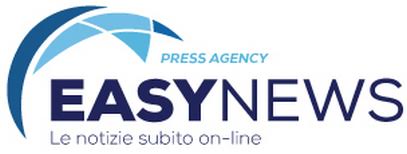Buongiorno,
Inviamo di seguito e in allegato il commento “BCE: è troppo presto per abbassare la guardia”, a cura di Frederik Ducrozet, Head of Macroeconomic Research, e Nadia Gharbi, Senior Economist, di Pictet Wealth Management.
Restiamo a disposizione.
Un caro saluto,
Carla Parisi
+39 3395796751
BCE: è troppo presto per abbassare la guardia
- La BCE ha mantenuto invariati i suoi tassi di interesse principali, con la depo al 4% come previsto. Il mercato non ha ottenuto una svolta dalla BCE e quest’ultima non si è rivelata nemmeno la banca centrale più lungimirante che speravamo di trovare.
- Le proiezioni dello staff della BCE sono state riviste al ribasso, ma con un’inflazione core ancora relativamente alta, al 2,7% nel 2024, al 2,3% nel 2025 e al 2,1% nel 2026. La dichiarazione ha evidenziato che “le pressioni sui prezzi interni rimangono elevate, soprattutto a causa della forte crescita del costo del lavoro per unità di prodotto”, ossia i dati retrospettivi, compresa la crescita dei salari, rimangono una fonte di preoccupazione. In effetti, è probabile che la crescita dei salari rimanga rigida nel breve termine, non da ultimo perché questi dati ci giungono con un certo ritardo. Ma, cosa importante, alla fine della conferenza stampa Lagarde ha detto che ci sono prove che le imprese hanno iniziato ad assorbire le pressioni sui costi riducendo i margini, il che sarebbe una buona notizia per l’inflazione. In altre parole, gli indicatori prospettici dei dati retrospettivi suggeriscono che le pressioni inflazionistiche si attenueranno il prossimo anno.
- Sempre come si legge nel comunicato della BCE, ci si aspetta che l’inflazione “torni a salire temporaneamente nel breve termine”. Si tratterà di un’altra notizia vecchia, determinata dagli effetti di base dell’energia e dalla fine di alcune misure di sostegno del governo, ma un rimbalzo dell’inflazione complessiva potrebbe far guadagnare alla BCE un po’ di tempo, almeno fino a marzo, prima di rivalutare le prospettive di medio termine.
- È importante notare che le proiezioni sull’inflazione di fondo sembrano troppo conservative, almeno nel breve periodo. Dato che l’IAPC flash di novembre non è stato incluso nelle previsioni, ci vorrebbe un enorme rialzo nei prossimi due mesi perché le proiezioni dello staff per l’IAPC core non vengano nuovamente riviste al ribasso a marzo. A parità di condizioni, le proiezioni potrebbero avere un’inflazione inferiore all’obiettivo a partire dal 2025.
- La Presidente Lagarde ha dichiarato che la BCE non ha discusso di tagli dei tassi e che non c’è stato alcun dibattito in merito. “Dovremmo abbassare la guardia? Assolutamente no”, ha affermato, respingendo le aspettative di tagli aggressivi dei tassi. In seguito ai commenti della Lagarde, gli operatori hanno ridotto le scommesse sui tagli della BCE per il prossimo anno.
- La BCE ha inoltre annunciato una riduzione molto graduale dei reinvestimenti nell’ambito del Pandemic Emergency Purchase Programme (PEPP) nella seconda metà del 2024. La decisione è arrivata prima del previsto, ma ha scelto di adottare un approccio più cauto di quello che alcuni temevano: i reinvestimenti continueranno per intero durante il primo semestre del 2024, poi nel secondo semestre la BCE “intende ridurre il portafoglio PEPP di 7,5 miliardi di euro al mese in media”, interrompendoli alla fine del 2024 come inizialmente previsto. Poiché i reinvestimenti dei PEPP sono stimati in circa 15 miliardi di euro al mese, stiamo parlando di 45 miliardi di euro in meno, cioè una goccia nel mare. Lagarde ha affermato che il PEPP “è servito allo scopo”, aggiungendo che “se c’è frammentazione ci sono strumenti che la BCE non esiterebbe a usare”.
- Insomma, per la BCE è troppo presto per dichiarare vinta la propria battaglia contro l’inflazione. Mentre il presidente della Fed Jerome Powell ha dichiarato ieri che sono iniziate le discussioni sul taglio dei tassi, Lagarde si è unita alla Banca d’Inghilterra nell’opporsi. Dopo la decisione sul PEPP, l’attenzione si concentrerà sui dati (sull’inflazione) dei prossimi due mesi per determinare la tempistica del primo taglio dei tassi. Il nostro scenario di base prevede che la BCE inizi a tagliare i tassi a giugno, con il rischio di una mossa anticipata ad aprile, ma molto dipenderà anche dalla Fed, che la BCE lo voglia o meno. Qualsiasi mossa preventiva aggressiva da parte della Fed potrebbe forzare la mano anche alla BCE, motivo per cui i mercati sono vicini a prezzare un taglio completo dei tassi della BCE a marzo.
ENGLISH VERSION
ECB: too early to lower the guard
- The ECB kept its key interest rates unchanged, with the depo at 4% as expected. The market did not get a pivot from the ECB, and neither did we get the more forward-looking central bank we were hoping for.
- There was ground for hawkishness in the ECB staff projections, which were revised downwards but with core inflation still relatively high, at 2.7% in 2024, 2.3% in 2025, and 2.1% in 2026. The statement noted that “domestic price pressures remain elevated, primarily owing to strong growth in unit labour costs”, ie. backward-looking data including wage growth remain a source of concern. Indeed, wage growth is likely to remain sticky in the near-term, not least because we get this data with a lag. But importantly, Lagarde said at the end of the press conference that there was evidence that companies have started to absorb cost pressures by reducing margins, which would be good news for inflation. In other words, forward-looking indicators of backward-looking data suggest that inflationary pressures will ease next year.
- As the ECB statement also notes, inflation is expected “to pick up again temporarily in the near term”. This will be another piece of old news driven by energy base effects and the end of some government support measures, but a rebound in headline inflation may buy the ECB some time, at least until March, before reassessing the medium-term outlook.
- Importantly, core inflation projections look too conservative, at least in the near-term. Given that November flash HICP was not included in the forecasts, it would take a massive upside in the next couple of months for the staff projections for core HICP not to be revised lower again in March. All else equal, the projections may then have inflation below target from 2025.
- President Lagarde said that the ECB did not discuss rate cuts, and that there had been no debate on this issue. “Should we lower our guard? Absolutely not”, she said, pushing back against aggressive rate cuts expectations. Following Lagarde’s comments, traders pulled back somewhat bets on ECB cuts next year.
- The ECB also announced a very gradual phasing out of the reinvestments under the Pandemic Emergency Purchase Programme (PEPP) in the second half of 2024. The decision did come earlier than expected but chose to take a more cautious approach than some feared: reinvestments will continue in full during H1 2024, and then in H2 the ECB “intends to reduce the PEPP portfolio by €7.5 billion per month on average”, stopping them at the end of 2024 as initially planned. Since PEPP reinvestments are estimated to be around €15bn per month, we’re talking about €45bn less, i.e., a drop in the ocean. Lagarde mentioned that the PEPP “served its purpose” adding that “if there is fragmentation there are tools the ECB would not hesitate to use”.
- In all, it was too early for the ECB to claim victory in its battle against inflation. While Fed Chair Jerome Powell said yesterday that discussions on rate cuts have begun, Lagarde joined the Bank of England in offering pushback. With the PEPP decision out of the way, the focus will be the (inflation) data in the next couple of months to determine the timing of the first rate cut. Our baseline scenario has been for the ECB to start cutting rates in June, with a risk of an earlier move in April, but a lot will also depend on the Fed, whether the ECB like it or not. Any aggressive pre-emptive move from the Fed might force the ECB’s hand too, which is the reason why markets are close to pricing in a full ECB rate cut in March.





